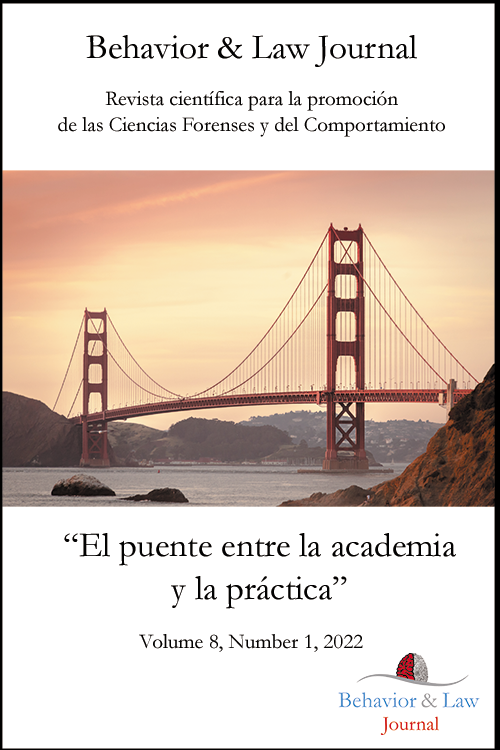Abstract
The main goal of the present study was to verify the existence of changes in the self, due to a priming effect (facilitation) in our generalized-other by the presentation of advertisements that depict models of beauty or desirable lifestyles. We also checked whether this effect is higher among the group under 41 years of age compared to the group older than that age. On the other hand, it has been analysed the possible relationship between material values and the possible facilitation produced. Forty-five healthy adults participated in the study, who took two Implicit Association Test (IAT) separated by the presentation of advertisements. Subsequently, all the participants responded to the abbreviated version of Richins' (2004) Material Value Scale (MVS). The results of this study have shown a priming effect on self-esteem due to the estimation of the generalized-other after the presentation of the advertisements. However, no significant difference was observed between both groups of age. Finally, a correlation was found between the importance of material values and the priming effect produced by the Implicit Associations Test, but again, differences were not found as a function of age. In conclusion, the implicit nature of the facilitation reveals a certain unconscious component in the formation of the personal identity.
References
Ashikali, E. M., & Dittmar, H. (2012). The effect of priming materialism on women's responses to thin-ideal media. The British Journal of Social Psychology, 51(4), 514–533. https://doi.org/10.1111/j.2044-8309.2011.02020.x
Bargh, J. A. (2006). What have we been priming all these years? On the development, mechanisms, and ecology of nonconscious social behavior. European Journal of Social Psychology. 36(2):147-168. https://doi.org/10.1002/ejsp.336
Burris, K., Brownlow, S., & Lins, K. (2016). Does fitness priming influence self- and other-judgments of personal and physical characteristics? Psi Chi Journal of Psychological Research. https://doi.org/10.24839/2164-8204.JN21.4.218
Demeyer, I., Romero, N., & De Raedt, R. (2018). Assessment of implicit self-esteem in older adults: the role of actual and ideal self-esteem in negative mood. Assessment, 25(3), 302–309. https://doi.org/10.1177/1073191117691607
Greenwald, A. G., Nosek, B. A., & Banaji, M. R. (2003). Understanding and using the Implicit Association Test: I. An improved scoring algorithm. Journal of Personality and Social Psychology, 85(2), 197–216. https://doi.org/10.1037/0022-3514.85.2.197
Higgins, E. T. (1987). Self-discrepancy: A theory relating self and affect. Psychological Review, 94(3), 319–340. https://doi.org/10.1037/0033-295X.94.3.319
Karpinski, A. (2004). Measuring self-esteem using the Implicit Association Test: The role of the other. Personality and Social Psychology Bulletin, 30(1), 22–34. https://doi.org/10.1177/0146167203258835
Kasser, T. (2002). The High Price of Materialism. Cambridge, MA: MIT Press.
Lacan J., (1999) Seminario 4: La Relación de Objeto Editorial Paidós, Buenos Aires.
Lewis, M., Lewis, A., Hodgkin, J. (2014). Tell Me Who I Am: Sometimes it's Safer Not to Know. London: Hodder & Stoughton.
Mead, G. H. (1934). Mind, Self, and Society from the Standpoint of a Social Behaviorist. University of Chicago Press: Chicago.
Mussweiler, T. (2007). Assimilation and Contrast as Comparison Effects: A Selective Accessibility Model. In D. A. Stapel and J. Suls (Eds.), Assimilation and contrast in social psychology (p. 165–185). Psychology Press.
Orth, U., Trzesniewski, K. H., & Robins, R. W. (2010). Self-esteem development from young adulthood to old age: A cohort-sequential longitudinal study. Journal of Personality and Social Psychology, 98(4), 645–58. https://doi.org/10.1037/a0018769
Piaget, J. (1946). La formación del símbolo. Fondo de Cultura Económica. 2016.
Puente-Díaz, R., y Arroyo, J. (2015). The influence of personality dimensions on material and frugal values. Anales de Psicología, 31. 37-44. https://doi.org/10.6018/analesps.31.1.167401
Puente-Díaz, R., y Arroyo, J. (2017). Material values: A study of some antecedents and consequences. Contaduría y Administración, 62(4), 1214-1227. https://doi.org/10.1016/j.cya.2017.06.008
Richins, M.L. (2004). The Material Values Scale: measurement properties and development of a short form. Journal of Consumer Research, 31, 209-219. https://doi.org/10.1086/383436

This work is licensed under a Creative Commons Attribution-NonCommercial-NoDerivatives 4.0 International License.
Copyright (c) 2022 Behavior & Law Journal
